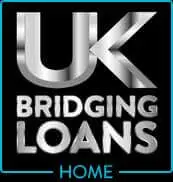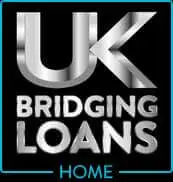Bridging Loan To Stop Repossession
Understanding how to prevent the unfortunate event of home foreclosure is crucial to safeguarding your property and avoiding a catastrophic situation. Shockingly, research indicates that a significant number of homeowners lack knowledge on effective strategies to evade repossession.
While most banks and lenders strive to steer clear of foreclosures, the ultimate outcome largely hinges on the actions or inaction taken by the debtors themselves.
How a repossession happens
Foreclosure happens when mortgage lenders seek legal authority from the court system to confiscate your home as a result of non-payment or failing to properly comply with mortgage conditions. When you sign a mortgage agreement, you give the lender a stake in your house (represented as an interest percentage). Although their share diminishes as you diligently repay borrowed funds, it’s important not to overlook their prerogative to pursue repossession if payments are neglected.
This implies that even if you’ve successfully paid off 85% or 95% of your mortgage balance, there remains a possibility of repossession should timely payment obligations be disregarded. Therefore, it is vital to take preventative action as soon as possible.
The repossession process
Banks and lenders rarely seek repossession orders without first considering all other viable options to resolve the issue. Where a bank chooses to pursue the repossession of a property, the process generally takes place as follows:
- 1. Mortgage arrears: Missing the occasional mortgage payment is not typically grounds for repossession. You may face late payment fees or other penalties, but your lender will usually give you a fair warning along with the opportunity to make up your repayments. It is only when mortgage arrears become relatively serious that repossession proceedings begin. With regard to how to stop a repossession order being sought, it is vital to speak with your lender at this early stage to reach a mutually amicable agreement.
- 2. Court order application: A formal application to the courts has been made by the finance lender to repossess your home. This would first involve a hearing of a court case where your attendance is mandatory. The judge presiding over the case will hear evidence and listen to arguments on both sides of the dispute, ultimately determining whether to grant a repossession order.
- 3. Repossession order and eviction: If the lender’s application for a repossession order is successful, the occupant of the property will usually have a period of 28 days to move out. This may be extended to 56 days in some cases upon request or appeal. It should be noted that any court fees expended on both sides will be added to the borrower’s on-going debt, frequently dramatically increasing the total owing. If a resident of a property refuses or is unable to leave their house by the agreed-upon time, they may be forcibly removed along with their things.
How to avoid repossession
Understanding how to stop the repossession of your home through constructive dialogue is essential for all homeowners. Nobody plans to fall into arrears or deliberately fail to meet their repayment obligations; hard times and financial shortfalls often cannot be predicted.
There are various options available to stop a repossession from becoming necessary, which for most struggling homeowners include the following:
- 1. Reach out to your lender: Major banks and lenders are frequently prepared to halt repossession merely by addressing the matter with the borrower and devising a realistic repayment plan. This could be a short suspension of your payments while you get your finances back on track, a smaller monthly payment you can manage, or anything else that helps you to repay your debt gradually.. Acting early is essential, as leaving things until the last moment makes it more difficult to reach an acceptable agreement.
- 2. Repay a significant sum of the loan: Even if you are unable to pay off your financial amount completely, indicating that you are willing and working towards doing so will show the lender that you are serious about making good on your commitments. To avoid the need for repossession, this should be considered as soon as feasible.
- 3. Consider a bridging loan: If your financial situation is just temporary, you may want to explore arranging a short-term loan against your house. A bridging loan is an example of this, which may be provided in a couple of days and returned in full within a few months. This allows you to return your outstanding mortgage debt in full, sell your house for its full market value, and repay your bridging loan all at once. All remaining profits will be yours to keep, which could be used to finance a new home purchase when the time is right.
- 4. See if you’re covered by mortgage protection insurance: It’s always worth checking whether you are covered (fully or partially) by a mortgage protection insurance policy. Many homeowners enter into such policies when taking out a mortgage, though they do not fully understand the extent to which they are covered.
Depending on the circumstances of your financial shortfall, your mortgage insurance policy can cover your repayments to avoid home repossession entirely. For more information on short-term borrowing to cover urgent expenses and outgoings like these, book your obligation-free consultation with the team at UK Bridging Loans today.
Uk’s Best bridging loan rates from 0.55%
How it works

Get in touch
Clients approach UK Bridging Loans either directly or via introducers. Basic questions by way of a “fact-finding” process are used by UK Bridging Loans to determine if the lending requirements are a possibility.
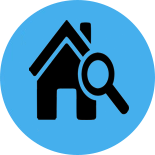
Fast approval
An immediate yes or no answer is given, and if suitable, a quotation is formulated and forwarded to the client, usually by email.
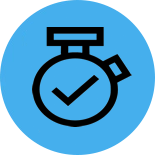
Formal offer
A formal offer is produced for any client wishing to proceed and forwarded for signature, again, usually by email.

Representative visit
Each client is visited at the security address for the signature of the remaining loan paperwork, including a CH1 land registry charging order. We will also collect any additional pre-requested documentation.
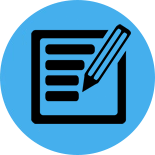
Dedicated underwriting
The signed documentation was immediately sent to our underwriters. Our model is based on very quick completions, as each deal is funded using all of our own money. On rare occasions, we may request additional information.
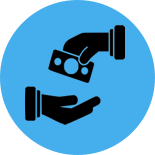
Payment of funds
Average completion from initial acceptance to pay-out is usually just a few days. We rarely require valuations or additional legal representation. The land registry charge will be removed once the bridging loan is repaid.
Who can use bridging finance?
Age
The applicant could be too old to obtain a standard high-street mortgage, as most mortgage lenders now prevent borrowing beyond what is deemed “normal retirement age”.
Property conditions
The property may be in a condition where it is not suitable for mortgage financing, and as such, a bridging loan could be used to complete the purchase and any required work prior to refinancing.
Credit
The applicant may have had some adverse credit, however minor, which was previously acceptable to lenders but now no longer fits the high street lending criteria.
Income
The applicant may have difficulty proving the income requirements needed for more regular financing. This may be due to poor self-employment records, a break from work, a reduction in self-employed workloads, or overtime.
USP’s
Superfast completion, often within days
Quick auction finance
2nd charge behind the bridging lender
Pure equity-based lending
Loans from £25,500
Land, with or without planning
3rd charge (consent is not always required)
2nd charge behind the equity release lender
Residential and commercial
A free legal option
2nd charge (consent is not always required)
Adverse credit is considered
Up to age 85
Valuations are not always required
No monthly payments
Frequently asked questions
Can you stop a house repossession?
Yes, there are a number of things you can do to try to stop your house from being repossessed. These include:
- Contact your lender as soon as you miss a payment. The sooner you talk to them, the more likely they are to be willing to work with you to find a solution.
- Negotiate a repayment plan. This could involve extending the term of your mortgage, reducing the amount you repay each month, or adding the missed payments to the end of your mortgage term.
- Apply for a hardship mortgage. This is a type of mortgage that can be tailored to your specific circumstances, such as if you have lost your job or have suffered a drop in income.
Can I sell my house if it is being repossessed?
In some cases, you may be able to sell your house before it is repossessed. This is known as a pre-possession sale. However, you will need to find a buyer who is willing to pay the market value of your home, even though you are in financial difficulty. You may also need to pay off your mortgage in full in order to sell your home
How many mortgage payments were missed before repossession?
There is no set number of mortgage payments that you can miss before your lender can start repossession proceedings. However, most lenders will wait until you have missed a significant number of payments before they take action. This is because they want to give you the opportunity to resolve the issue before it gets to the point of repossession.
How quickly can a bank repossess a house?
The process of repossessing a house can take several months. However, it can happen more quickly if your lender decides to apply for an immediate possession order. This order will allow them to take possession of your home without having to go to court.
Do you still owe money if your house is repossessed?
Yes, you will still owe money on your mortgage even if your house is repossessed. The lender will sell your house to recoup as much of the money as possible, but you will still be liable for any remaining balance. This is called a deficiency.
Can you get your house back after repossession?
In some cases, you may be able to buy your house back from the lender after it has been repossessed. This is called redemption. However, you will need to be able to pay the lender the full amount of the outstanding mortgage debt, plus any additional costs that have been incurred. It is important to seek legal advice if you are facing the possibility of house repossession. A solicitor can help you understand your rights and options and can represent you in court if necessary.
Bridging loan uses
Opening Hours
Mon-Thurs: 9am-8.30pm
Fri: 9am-5pm
Sat: 10am-5pm
Sun: 11am-5pm
Open 7 Days a Week
